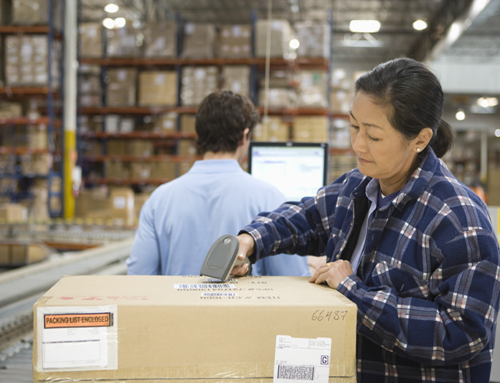The first eCommerce retailers opened up shop in the mid-1990s, barely noticed by the retail industry as a whole.
In fact, the Census didn’t bother to record their sales until 1999, when eCommerce represented just 0.6 percent of the retail sector. At the end of 2017, eCommerce controlled 9.1 percent of all retail sales, and now it’s a freight train out of control. With a compounded annual growth rate over the last five years of 14.7 percent, and similar projections through 2022, there’s no ignoring this sector any longer.
It should go without saying that eCommerce is here to stay.
eCommerce Logistics Costs Shattering U.S. Records
A new report by Armstrong & Associates, Inc. estimates that U.S. eCommerce logistics costs have hit a record-breaking $117.2 billion, a figure that’s equal to about seven percent of all U.S. logistics costs. These costs include things like domestic and international transportation, warehousing and fulfillment, last mile and reverse logistics.
This is, in part, due to the rapid growth of the sector, but it’s equally attributed to the ever-rising bar of shipment speed on both the customer-facing and reverse logistics ends. Two-day shipping isn’t a novelty anymore, and online shoppers expect to have their items in hand quickly and to just as quickly have them returned and credited.
Traditional retailers have tried to solve this conundrum in several ways, but seem to continue to seek less expensive options. Site-to-store delivery is popular because it gives customers fast, free shipping and only asks that they come to the store, where they’re likely to buy something additional while they’re waiting for their order to be located.
Still, the reverse logistics side of this, returns to store, is costly and can be confusing for both customer and retailer because of returns processes that are built on the old models, designed without eCommerce in mind.
Is it Sink or Swim in The Age of eCommerce?
Traditional retailers still command a huge portion of the retail sector, but more are being forced to figure out how to integrate some type of eCommerce into their legacy systems.
They’re at a distinct disadvantage in some ways simply because they’re having to work a whole new way of doing things into a system that they thought was perfected long ago. Slow, steady reverse logistics isn’t enough anymore. Today it’s all about no-questions asked returns, fast credits and significant numbers of returns that have to be managed.
Even though traditional retail continues to be the mainstay of the sector, there’s plenty of evidence that eCommerce is increasingly becoming the avenue of choice of shoppers across the board. In order to remain competitive in this market, traditional retailers have to find a way to absorb the additional costs of an eCommerce division or risk being overwhelmed by retailers who will.





Leave A Comment